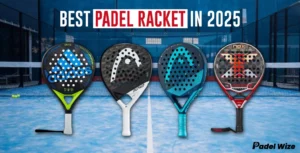Padel, the fast-growing racquet sport that combines elements of tennis and squash, has taken the sports world by storm. Whether you’re an experienced organizer or new to hosting padel tournaments, selecting the right tournament format is crucial to ensure a successful and enjoyable event. In this guide, padel local sport we’ll explore various padel tournament formats and provide insights on how to choose the best structure for your event.
Related blog Organizing Successful Padel Tournaments and Events
Understanding Padel Tournament Formats
Choosing the right format for your padel tournament can significantly impact the experience for players and spectators alike. Here’s a comprehensive overview of the most popular padel tournament formats:
1. Round Robin
Each participant plays against every other participant in their group, ensuring multiple matches for all involved.
Description:
In a Round Robin format, each team or player competes against every other participant in their group. This ensures that all participants get multiple games, making it ideal for recreational or less competitive events.
Pros:
- Every team gets to play multiple matches.
- Fair, as all participants face each other.
Cons:
- Can be time-consuming, especially with a large number of participants.
- Requires careful scheduling to manage the number of matches.
Related blog Gear Up for Success: A Guide to Padel Equipment
2. Knockout (Elimination)
Participants are eliminated after a single loss, continuing until only one remains unbeaten.
Description:
In a Knockout or Single Elimination format, teams or players are eliminated after a loss. The tournament continues until one team or player remains unbeaten.
Pros:
- Straightforward and easy to understand.
- Requires less time compared to Round Robin formats.
Cons:
- Participants who lose early do not get additional playtime.
- Less emphasis on player development.
Best For: Competitive tournaments where quick results are desired, such as championship events.
Related blog Gear Up for Success: A Guide to Padel Equipment
3. Double Elimination
Participants are given a second chance, with elimination occurring only after two losses.
Description:
Double Elimination tournaments give participants a second chance. A player or team is only eliminated after losing twice. This format is often favored for its balance between competitiveness and fairness.
Pros:
- Allows participants a second chance, making it less punishing for early losses.
- More games for each participant.
Cons:
- More complex to organize and schedule.
- Can be time-consuming with a larger number of participants.
Related blog What is Padel Sport? Key Facts and Tips for New Players
4. Swiss System
Participants compete in a set number of rounds against opponents with similar records, with rankings based on overall performance.
Description:
The Swiss System is a non-eliminating format where participants play a set number of rounds against opponents with similar records. This system ensures that everyone gets to play in every round, with the top performers progressing to the final stages.
Pros:
- Ensures competitive matches for all participants.
- Reduces the impact of a single loss.
Cons:
- Can be complex to organize and requires accurate record-keeping.
- Not ideal for very large tournaments due to the scheduling complexity.
5. Pool Play Leading to Knockout
Teams compete in Round Robin pools, with top performers advancing to a knockout stage for final elimination.
Description:
In this hybrid format, teams are first divided into pools where they play a Round Robin within their pool. The top teams from each pool then advance to a knockout stage.
Pros:
- Combines the benefits of pool play and knockout stages.
- Provides multiple games for participants before final elimination.
Cons:
- More complex and time-consuming to organize.
- Requires careful management of both pool and knockout stages.
Related blog What is Padel Sport? Key Facts and Tips for New Players
Choosing the Right Format
When selecting the format for your padel tournament, consider the following factors:
- Number of Participants: Larger numbers may benefit from formats like Swiss System or Pool Play Leading to Knockout to manage scheduling and ensure fairness.
- Competitive Level: For highly competitive events, Knockout or Double Elimination formats might be appropriate. For less competitive or recreational events, Round Robin could be a better choice.
- Time Constraints: If you’re limited on time, formats that minimize the number of matches, such as Knockout, might be preferred.
- Event Goals: Align the format with your event’s goals, whether it’s providing maximum playtime, ensuring fair competition, or focusing on quick results.
Related blog Unlocking the Secrets of Step Padel: Tips and Tricks for Success
Conclusion
Choosing the right tournament format is essential to the success of your padel event. Each format has its own advantages and disadvantages, so consider your specific needs and goals when making your decision. Whether you opt for a Round Robin, Knockout, Double Elimination, Swiss System, or a hybrid format, the key is to ensure that your tournament is organized, fair, and enjoyable for all participants.







